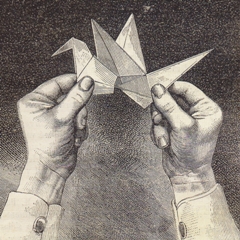| The Public Paperfolding History Project
x |
||||||||||||
|
||||||||||||
| Interested in paperfolding history? Why not try reading my Blog? - Life, Death and Paperfolding | ||||||||||||
|
||||||||||||
| Some
of the information I have recorded comes from my own
original research. Much of it, however, is drawn from the
research of other people that has kindly been provided to
me. I would particularly like to acknowledge the
assistance of Juan Gimeno, Michel Grand, Edwin Corrie,
Birgit Ebbert, Masatsugu Tsutsumi, Nobuko Okabe, Jaume
Coll Guerrero, Koshiro Hatori, Joan Sallas, Laura
Rozenberg, Coral Roma and Xiaoxang Huang, but many other
people have helped as well. It goes without saying that
the late David Lister's writings on paperfolding history
have also been invaluable, although they are no longer
sufficiently up to date to be relied upon in detail. The information I have recorded is drawn from texts in Japanese, Mandarin, Spanish, German, Dutch, French, English and several other languages. I am only fluent in English and rely on on-line translation tools such as Google Lens for assistance. This will necessarily mean that I have made mistakes (and also that some important information may have been accidentally omitted.) If you find any errors or inaccuracies in these pages, or are aware of additional information, particularly early information, that I do not know of, or may have overlooked, please let me know. Every page in this project is a work in progress and subject to change as new information becomes available. |
||||||||||||
| An Outline of Paperfolding History | ||||||||||||
This outline history is intended to provide a broad overview of all aspects of paperfolding history, but also to act as a gateway to the more detailed information held on the evidence pages. There are, at present, only three regions of the world where we can trace the development of independent paperfolding traditions in any detail, Europe, Japan and China. These were all originally isolated traditions, but cross-fertilisation between them occurred in the mid 19th and early 20th centuries. ********** General An Outline Chronology of Paperfolding History (to come) ********** Paperfolding in Europe and the Americas up to 1970 A Brief History of Practical Paperfolding in Europe and the Americas ********** Paperfolding in Japan up to 1970 A Brief History of Practical, Religious, Ceremonial and Etiquettical Paperfolding in Japan ********** Paperfolding in China up to 1970 A Brief History of Practical and Religious Paperfolding in China A Brief History of Recreational Paperfolding in China prior to Cross-Fertilisation (up to 1902) ********** Paperfolding Worldwide in the Modern Period ********** The only previous attempt to write a coherent outline history of paperfolding that I know of is Koshiro Hatori's 'History of Origami in the East and the West before Interfusion', which was published in 'Origami 5: Fifth International Meeting of Origami, Science, Mathematics and Education'. I owe a considerable debt to this work, especially for the framework of thought it has provided, although I have not always agreed with the author's conclusions. Cross-fertilisation between the three traditions began to occur at different dates in each region. European paperfolding began to be influenced by Japanese paperfolding in 1867, Japanese paperfolding began to be influenced by European paperfolding in 1876 and Chinese paperfolding began to be influenced by Japanese and European paperfolding in 1904. Koshiro Hatori has called this process 'interfusion'. I prefer the term 'cross-fertilisation', especially in relation to Japan and Western Europe, on the basis that there was no 'fusion', no complete integration, of the traditions at these dates. What happened was that they began to influence each other in a way that grew more extensive over time. The word 'interfusion' is much more applicable to what happened in relation to China and Japan, but for the sake of homogeneity I have used 'cross-fertilisation' there as well. Paperfolding in the Americas, which here largely means Argentina, Mexico and the USA, is mostly an extension of European paperfolding, although there is evidence of some direct Japanese influence on paperfolding in the USA. I have only attempted to record paperfolding history comprehensively until 1970. It was therefore also convenient to use this same date as a dividing line between the time when the various recreational paperfolding traditions were largely still separate, despite some cross-fertilisation, and the present situation, where they are almost completely integrated, even though this date has no particular historical validity in this context. |
||||||||||||
